A command center serves as the organizational heart of any busy home, providing a centralized location for managing family schedules, important documents, and daily essentials. These dedicated spaces transform chaotic household management into streamlined efficiency by consolidating calendars, mail sorting, key storage, and communication boards into one accessible area. Whether you have a spacious mudroom or just a small wall nook, command centers can be customized to fit any space and family size. From simple magnetic boards to elaborate wall-mounted systems, the right command center reduces daily stress while keeping everyone informed and organized.
1. Wall-Mounted Command Center System
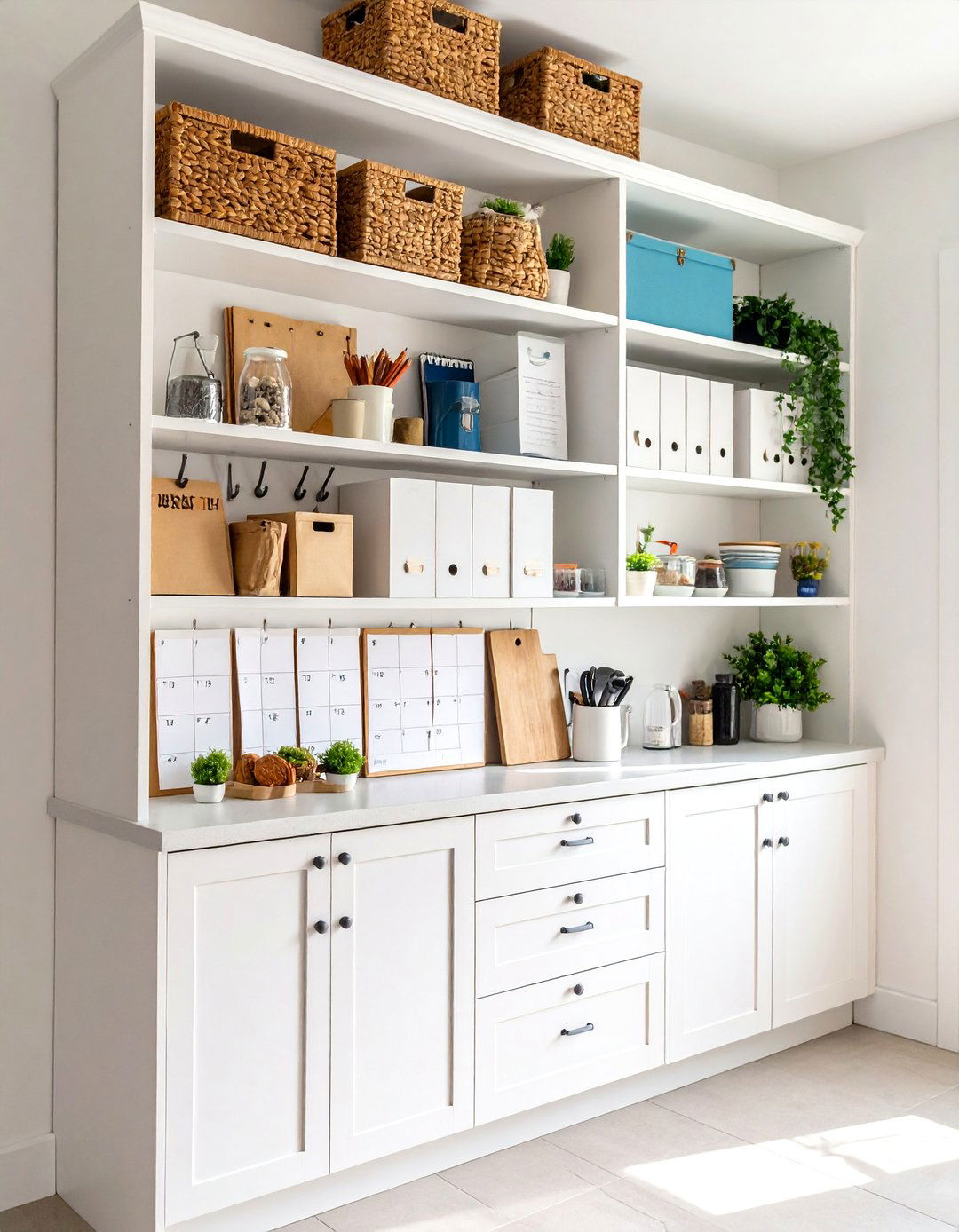
Transforming a blank wall into a comprehensive command center creates maximum organizational impact without consuming floor space. This approach combines multiple organizational elements like calendars, file holders, hooks, and memo boards mounted directly onto the wall surface. Start by selecting a wall in a high-traffic area such as near the main entrance or kitchen. Install a large whiteboard or cork board as your foundation, then add wire baskets for mail sorting, hooks for keys and bags, and clipboards for to-do lists. The black and white color scheme looks crisp and clean and helps your to-do lists pop. Label each component clearly to ensure family members know exactly where items belong. This system works particularly well for families with multiple schedules to coordinate, providing ample space for everyone's activities and commitments while maintaining a clean, organized appearance.
2. Kitchen Cabinet Command Center Design
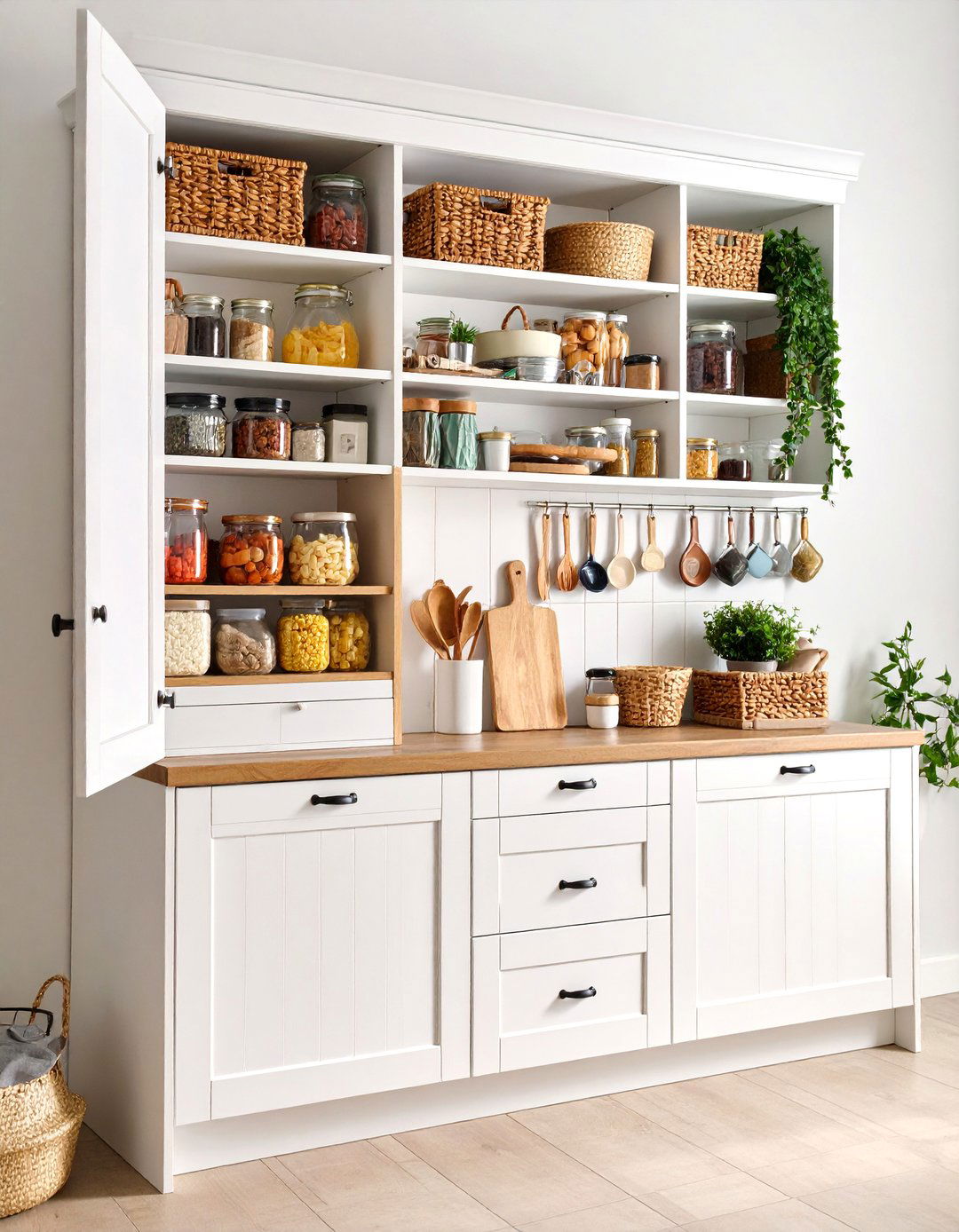
Converting an unused kitchen cabinet into a hidden command center provides organization without sacrificing your home's aesthetic appeal. Create a simple kitchen family command center inside a cabinet door with a weekly calendar, a place to leave messages, and more using just a whiteboard, sticky notes, and magnets. Install a dry-erase board on the inside of the cabinet door, add magnetic strips for holding notes and reminders, and mount small baskets or file holders inside for storing papers. Take meal planning to the next level with this clever command center idea by creating a mini hub for all things menu and meal prep. Include a narrow weekly calendar for meal planning, hanging notepads for shopping lists, and basic cooking guides like measurement conversions. This concealed approach keeps organizational tools easily accessible while maintaining clean kitchen lines and preventing visual clutter from disrupting your cooking space.
3. Magnetic Command Center Wall Setup
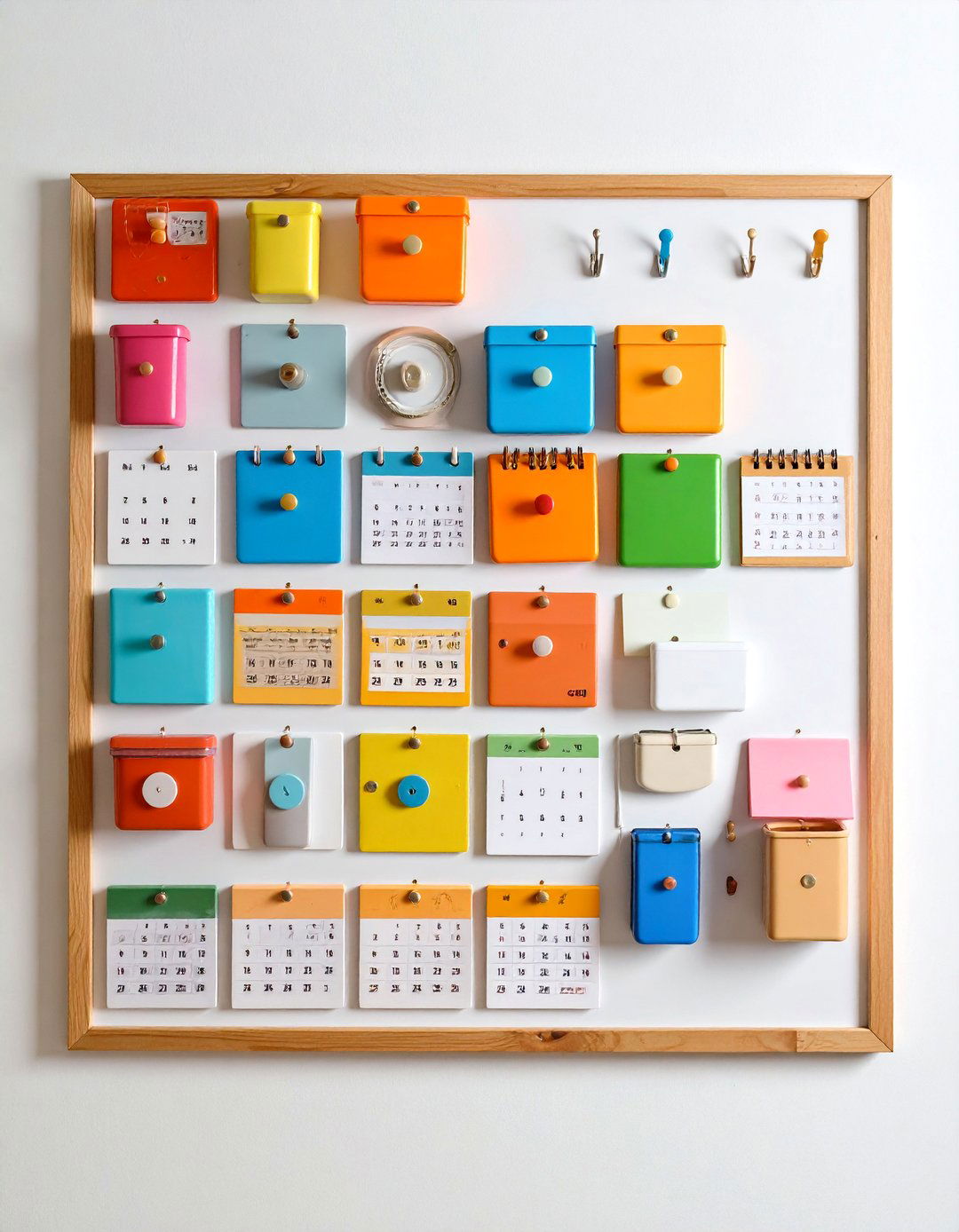
Creating a magnetic command center wall offers incredible flexibility for organizing and reorganizing your family's needs. Add magnetic paint to the wall and you can hang up all of your kids' artwork while meal planning, monthly calendars, and a place to hang your keys are all essential items. Apply magnetic primer and paint to transform any wall surface into a functional magnetic board, then add colorful magnetic containers, clips, and holders. This system allows you to easily move components around as your family's needs change throughout the year. Install magnetic strips, baskets, and hooks that can hold everything from school permission slips to grocery lists. Magnetic clips allow you to hang invitations, photos, or notes for one another. The beauty of this approach lies in its adaptability – you can reconfigure the layout seasonally or as children's activities change, ensuring your command center remains relevant and functional for years to come.
4. Mudroom Command Center Station
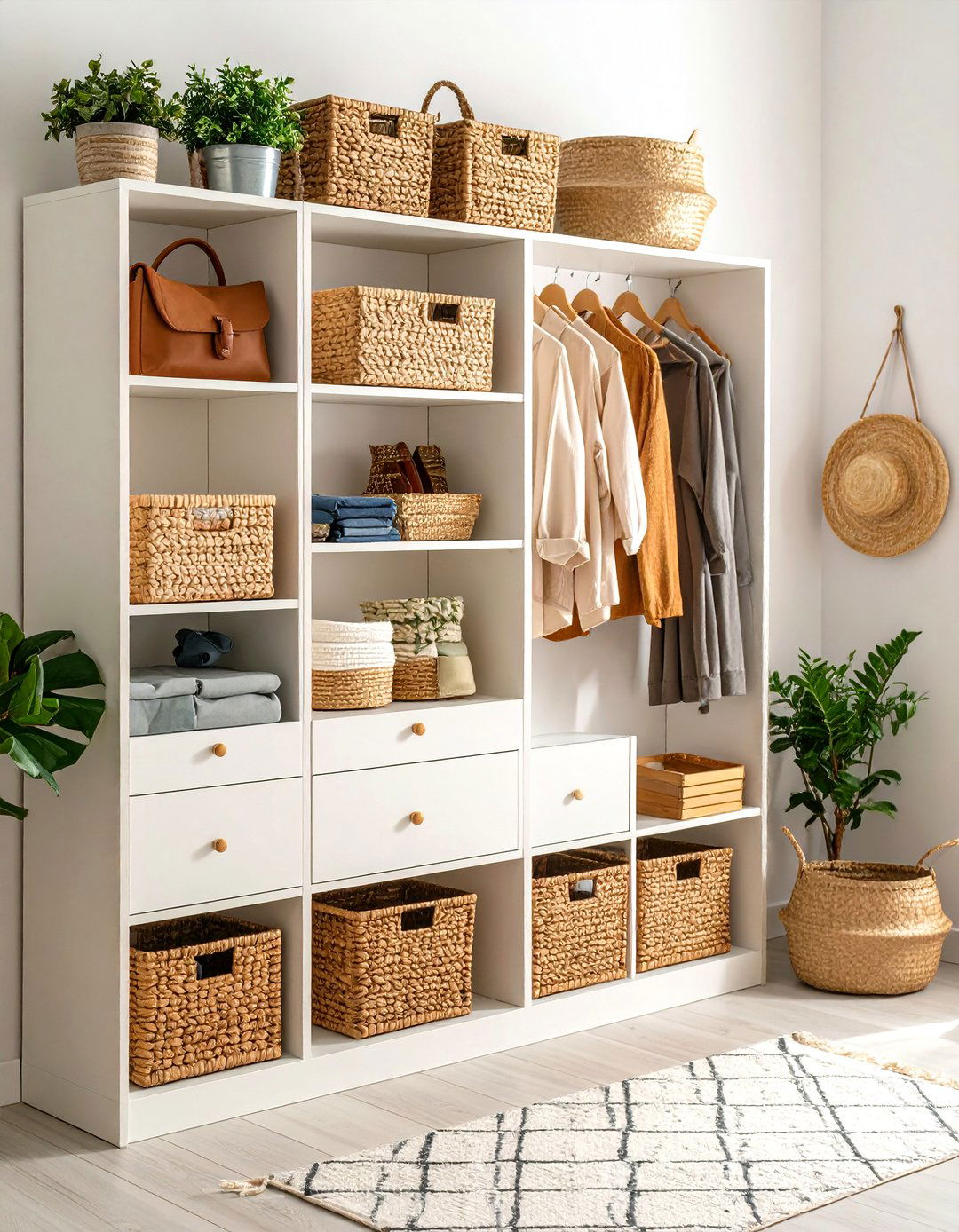
The mudroom presents the ideal location for a comprehensive command center since it naturally serves as the family's primary entry and exit point. The mudroom command center is the dream, since then you can have all the backpacks, and coats, and gear right alongside your calendar and organization system. Design this space to include individual cubbies or hooks for each family member's belongings, wall-mounted calendars for tracking schedules, and storage solutions for sports equipment and school supplies. Wall-mounted wire baskets with labels keep important papers at eye-level, while a clock helps family members stay on schedule. Install a large bulletin board for posting important notices, permission slips, and family photos. Add bench seating with built-in storage underneath for shoes and seasonal accessories. This centralized approach ensures that everything needed for daily departures and arrivals has a designated home, reducing morning chaos and forgotten items while creating an organized transition zone between home and the outside world.
5. Pegboard Command Center Organization
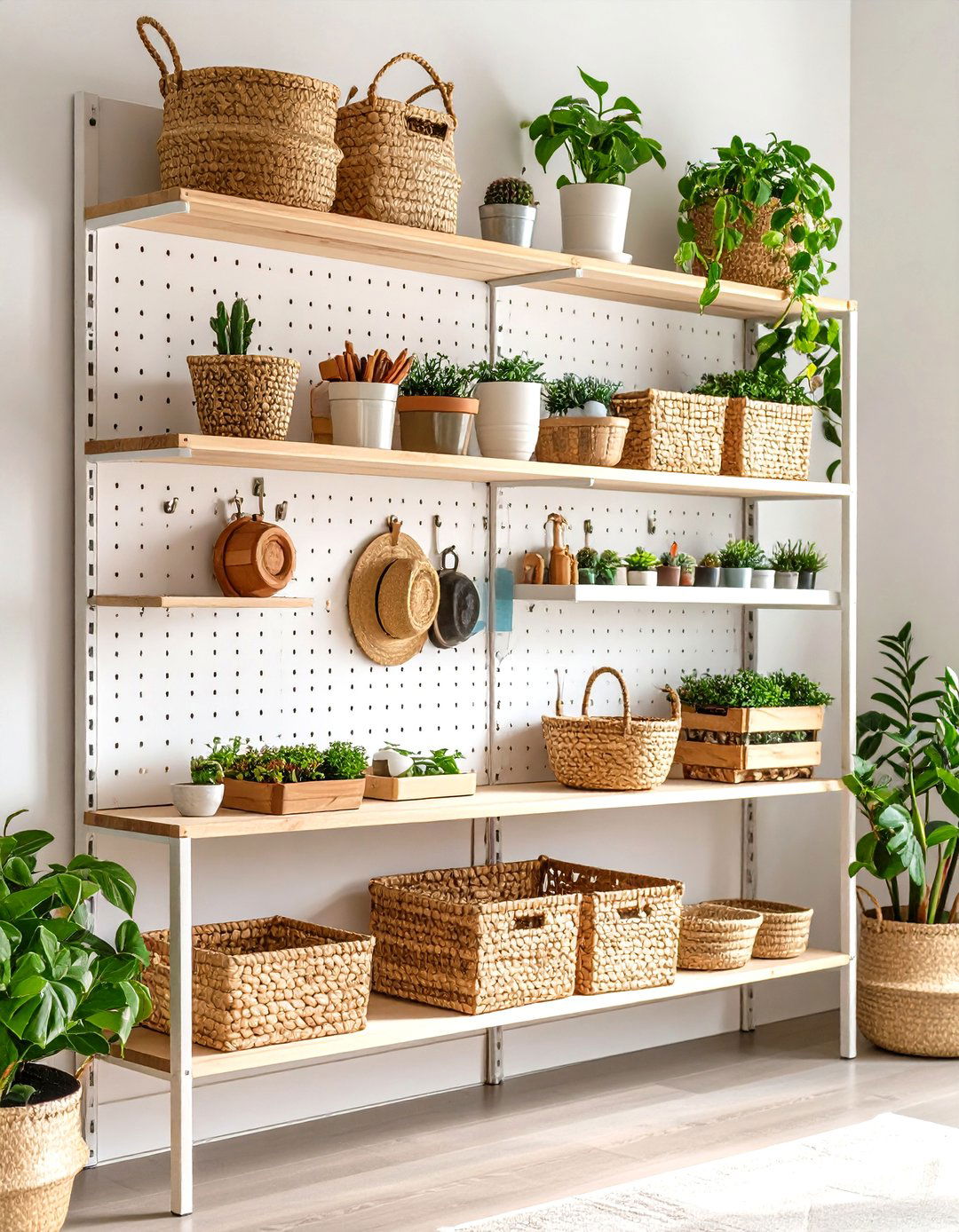
A pegboard command center offers modular organization that adapts to your family's changing needs throughout different seasons and life stages. Install a pegboard organizer system that allows you to customize the layout with various hooks, baskets, and shelves. Mount the pegboard at an appropriate height for all family members to access, then add combinations of wire baskets for mail, small shelves for supplies, and hooks for keys and lightweight items. A pegboard makes the perfect base for organizing a family command center with plenty of smart touches while leaving room for minimalist decor. The beauty of pegboard systems lies in their flexibility – you can easily rearrange components as your organizational needs evolve. Add specialized attachments like clipboard holders, small bins for pens and markers, and even charging stations for electronic devices. This system works exceptionally well for families who prefer a clean, industrial aesthetic while maintaining maximum organizational functionality and visual appeal.
6. Chalkboard Command Center Wall
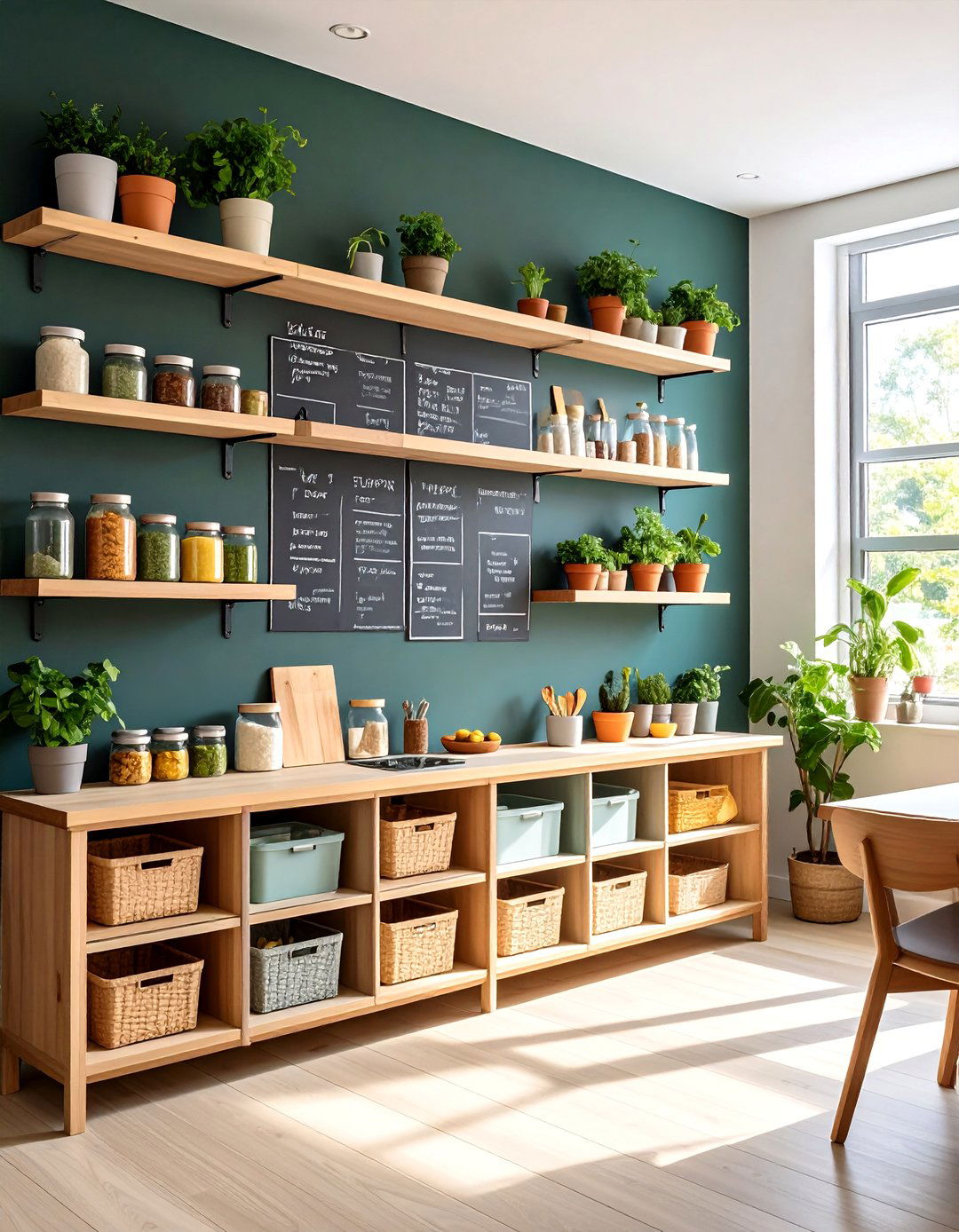
Transform an entire wall into an interactive family communication hub using chalkboard paint for ultimate customization and charm. Turn an empty wall into a giant blackboard using chalkboard paint, draw outlines for calendars and leave inspirational notes or drawings for family members or even guests. Apply chalkboard paint to create different sections for monthly calendars, weekly meal plans, to-do lists, and family messages. If you're lucky enough to have beautiful penmanship, anything you write on your to-do list will look like decor with a family command center based on a chalkboard wall. Add floating shelves below the chalkboard for chalk storage and small organizational items. Mount a floating shelf to act as a drop zone or as a space to get a little work done with comfy stools underneath. This approach encourages family participation in daily planning while providing endless opportunities for creativity, seasonal decorations, and personalized family communication that can evolve with your household's changing needs and artistic expressions.
7. Refrigerator Command Center Hub
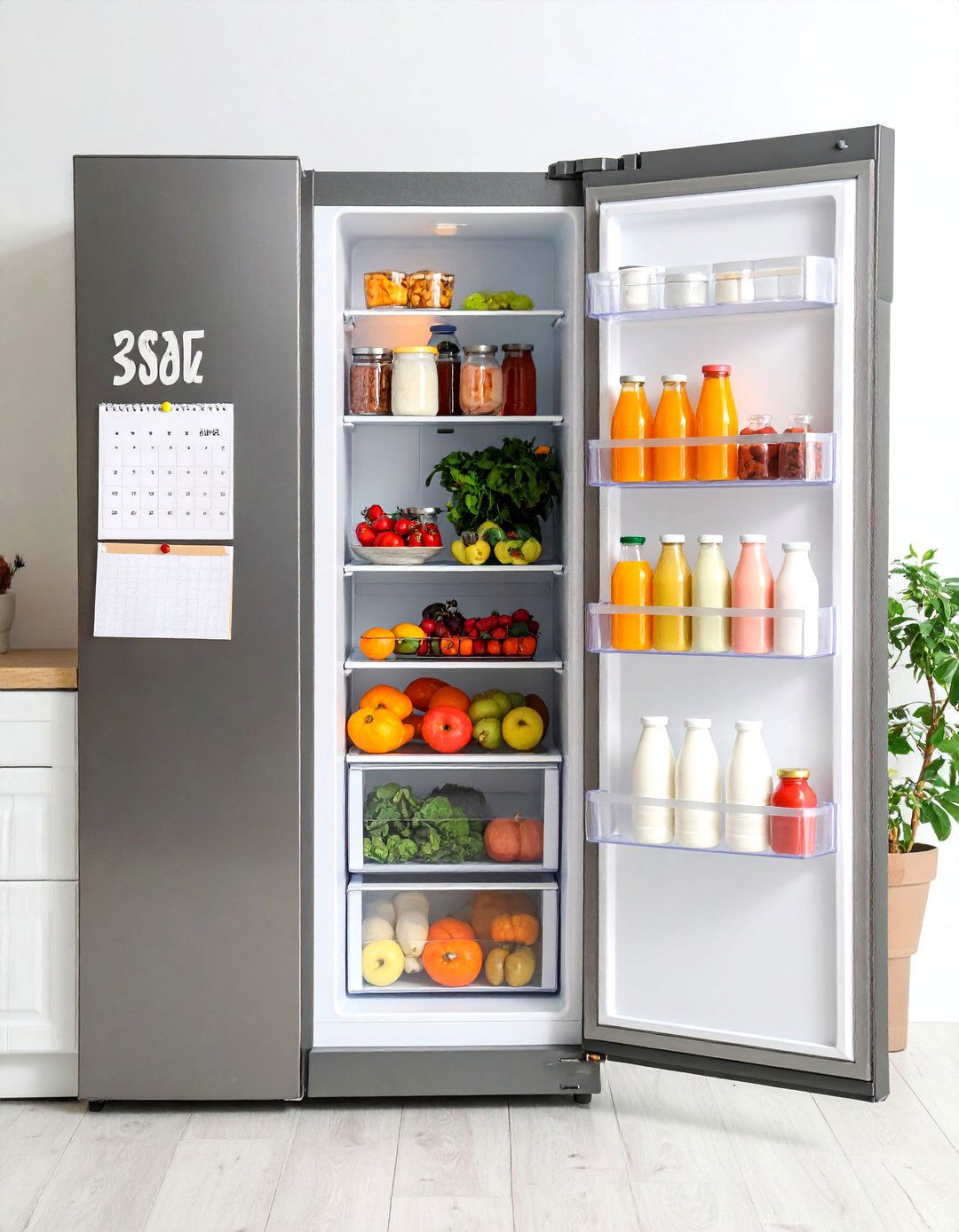
Utilize your refrigerator's side panel to create an efficient command center that takes advantage of this naturally central kitchen location. The side of the refrigerator is a great place to add a home command center that won't take up wall space, and it's in a central location for everyone to access. Install magnetic organizers, including monthly calendars for tracking appointments, magnetic notepads for lists and messages, and clear plastic storage bins for important papers. This simple family command center includes a monthly calendar to track appointments, a magnetic notepad for lists or messages, and a plastic storage bin for important papers. Add magnetic hooks for keys, magnetic clips for hanging artwork or reminders, and magnetic containers for storing pens and small supplies. This location proves especially effective for meal planning since it's directly adjacent to food storage, making it easy to coordinate shopping lists with current inventory. The magnetic surface provides easy reconfiguration options while keeping organizational tools within arm's reach of the kitchen's primary workspace.
8. Small Space Command Center Solution
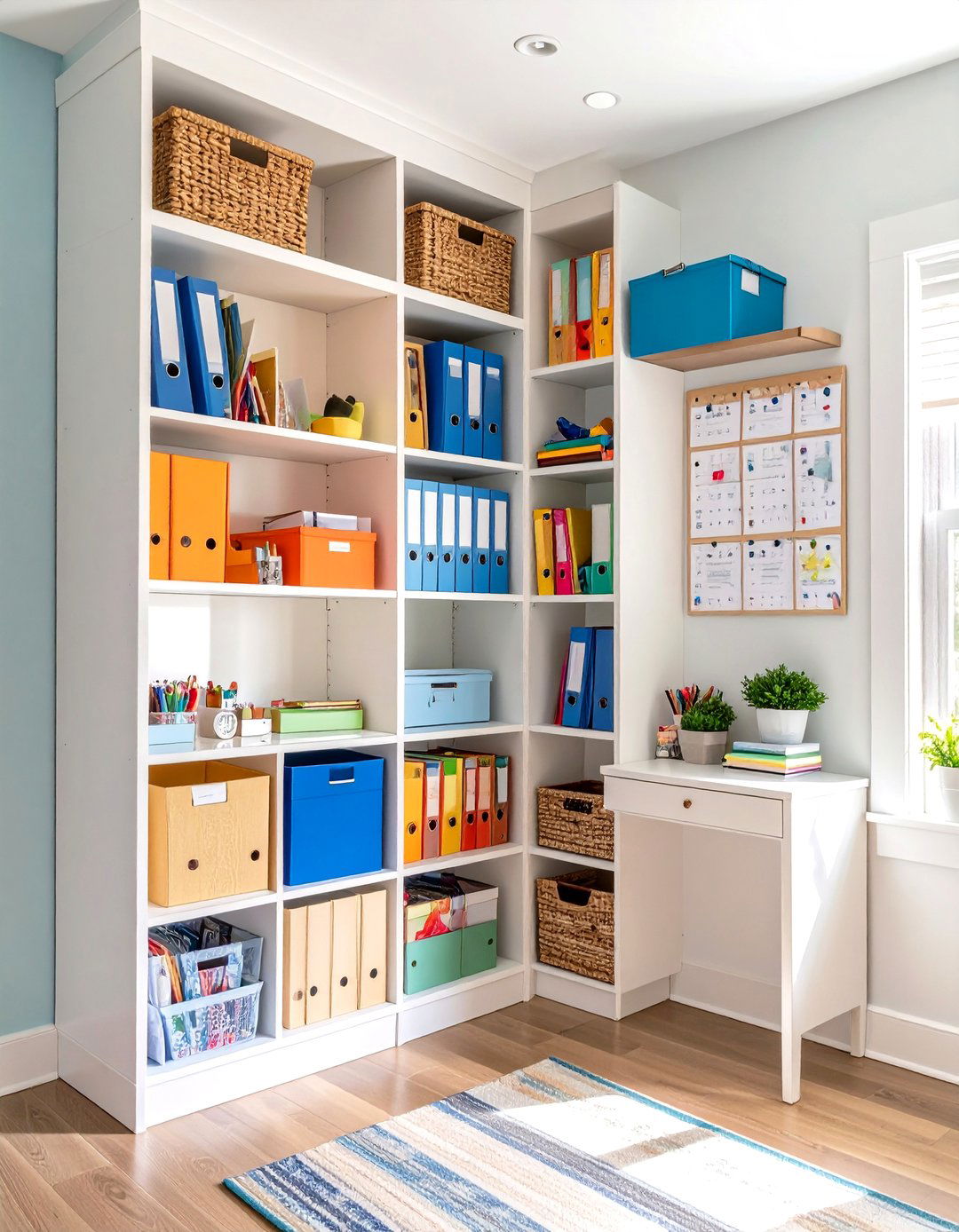
Maximize organization potential in compact living spaces by creating efficient command centers that deliver full functionality within minimal square footage. A family command center doesn't need to take up a ton of space; in fact, a corner of the countertop will get the job done with mounted file folders and a cute pin board. Focus on vertical storage solutions using wall-mounted organizers, over-the-door systems, and stackable components that make every inch count. If you're short on wall space, incorporate a variety of storage solutions and utilize every inch, including the area behind a door. Install narrow shelving units, magnetic strips on any available metal surfaces, and multi-functional furniture pieces that serve double duty. Not everyone has an entire wall that they can dedicate to a family command center, and if this sounds like you, then a countertop organizer will help you turn a surface into a family hub. Consider portable solutions like rolling carts or tabletop organizers that can be moved when space is needed for other activities while still maintaining essential organizational functions.
9. DIY Wooden Command Center Board
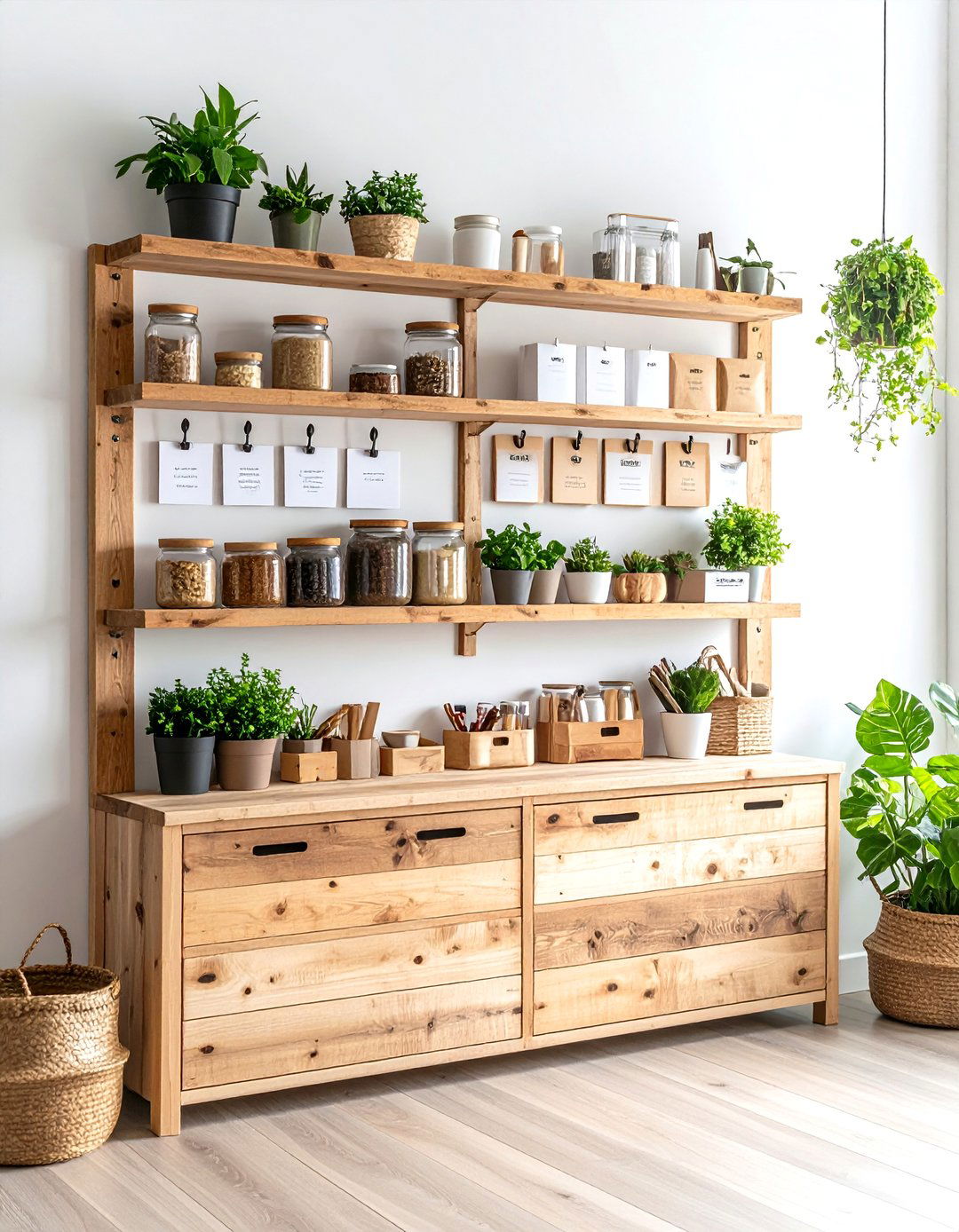
Craft a personalized wooden command center board that reflects your family's style while providing customized organizational solutions. You could build your own command center with thoughtful details like hanging hooks, label holders, and spots to display the date. Start with a large piece of reclaimed wood or plywood as your foundation, then add various organizational elements like small shelves, hooks, and holders. Who knew one wooden board could create so much order with spots for a menu plus daily, weekly, and monthly cleaning chores. Install clipboard holders for rotating lists, small cubbies for mail sorting, and decorative hooks for keys and lightweight bags. Paint or stain the wood to match your home's décor, and add labels using vinyl lettering or hand-painted signs. You can use a Cricut Joy to cut permanent black vinyl to personalize the whiteboard, containers, and baskets to your family's needs while tying everything together. This DIY approach allows complete customization while creating a unique focal point that combines functionality with personal style and craftsmanship.
10. Closet Command Center Transformation
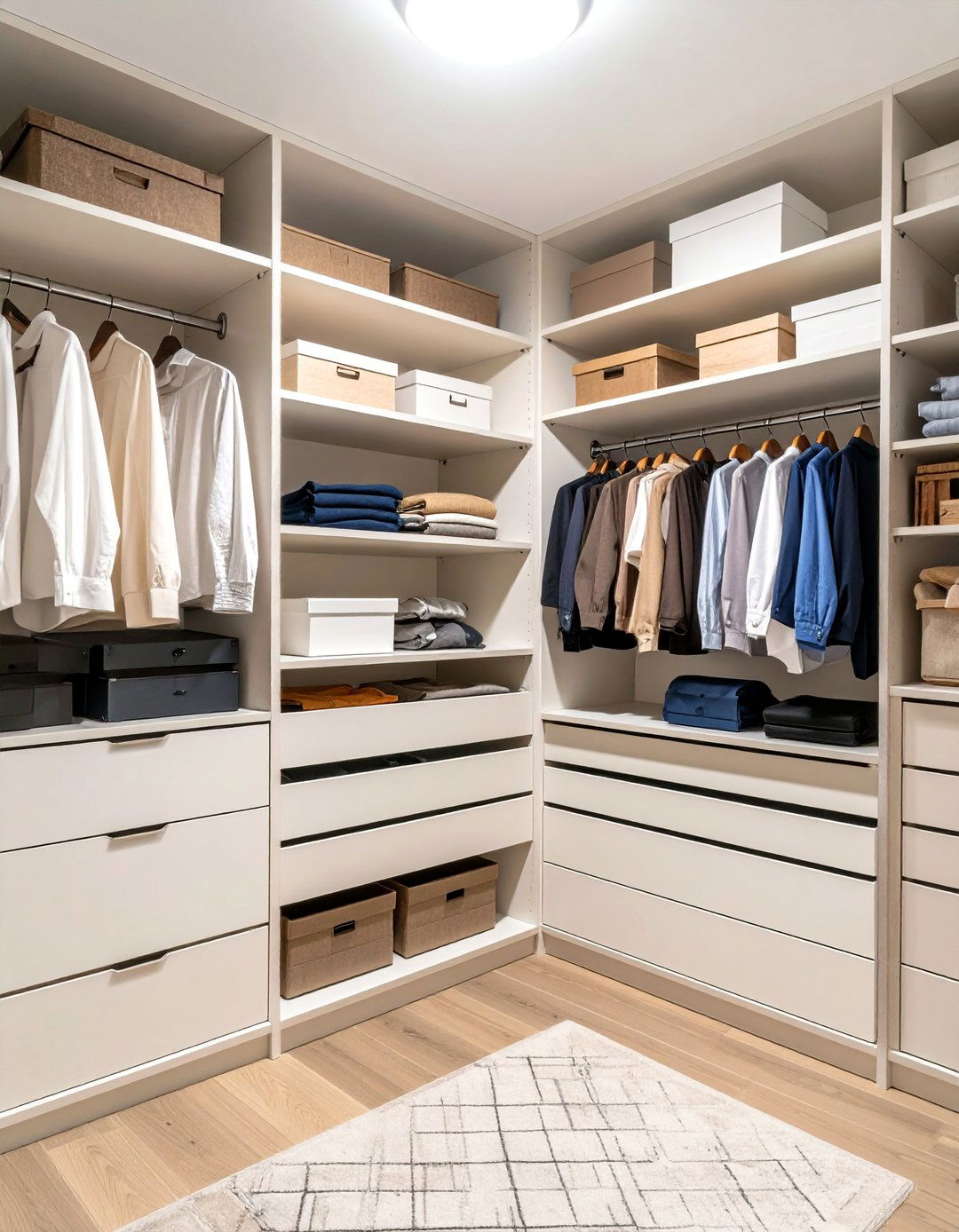
Convert an underutilized closet space into a comprehensive family command center that maximizes storage while keeping organizational tools easily accessible yet hidden from view. If you have a small closet that's not doing much for organization, try turning it into a family command center with charging docks for the whole family, plus plenty of labeled folders, bins, and calendars. Remove existing closet systems and install custom shelving, wall-mounted organizers, and a small desk surface if space permits. Add adequate lighting to ensure the space remains functional throughout the day. Turn unused space into something useful by adding a command center to the back of a closet door or cabinet where everything will have its special space, and you can tuck it away so it's out of sight. Install charging stations with cord management systems, file organizers for important documents, and hooks for bags and jackets. This enclosed approach provides extensive organizational capacity while maintaining your home's clean aesthetic, making it perfect for families who prefer concealed storage solutions.
11. Countertop Command Center Setup

Establish an organized command center directly on your kitchen or desk countertop using strategic placement and carefully selected organizational tools. A countertop organizer will help you turn a surface into a family hub, and you can also use it to organize kitchen cookbooks which takes streamlining your space to another level. Select a consistent area that won't interfere with daily kitchen tasks, then arrange vertical file sorters, small baskets for supplies, and a desktop calendar or planning system. A small desk in the kitchen works perfectly for a home command center with desk drawers for important papers and a place to pay bills or meal plan. Include a small container for pens and markers, a letter tray for incoming mail, and a digital or analog clock for time management. A wire file sorter organizes paperwork and a charging station manages cords, but the countertops are otherwise clear to provide space to pay bills and sort mail. This approach works well for renters or those hesitant to make permanent wall modifications while still achieving significant organizational benefits.
12. Digital Charging Command Center
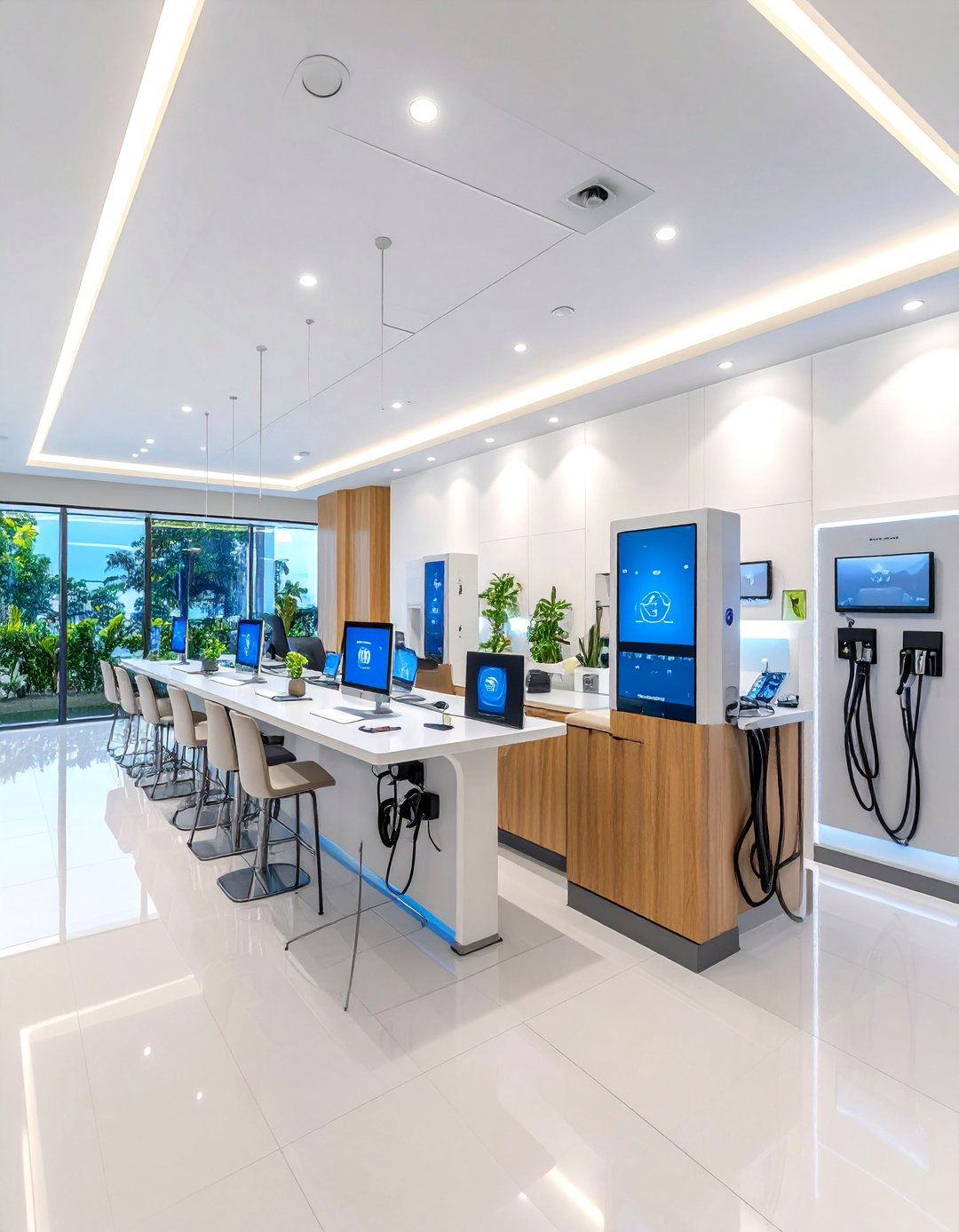
Create a modern command center that seamlessly integrates technology management with traditional organizational needs in our device-heavy households. Create a kitchen command center that includes a dedicated charging station for all your devices, which can be a wall-mounted unit or countertop organizer with compartments for phones, tablets, and other gadgets. Install charging drawers or designated charging zones with multiple USB ports and traditional outlets to accommodate various device types. The Docking Drawer charging station became the go-to spot for charging devices each night, instilling a sense of routine and organization for the entire family. Include cable management solutions to prevent cord tangling and maintain a clean appearance. A charging station manages cords while countertops remain clear to provide space for other activities. Add digital displays for family calendars or smart home controls, and incorporate traditional elements like paper storage and writing surfaces. This hybrid approach addresses modern technology needs while maintaining essential organizational functions, creating a command center that serves both digital natives and traditional planners effectively.
13. Entryway Command Center Drop Zone

Design your entryway as the ultimate command center drop zone where family members can efficiently manage the transition between home and outside activities. Set up a family command center in your entryway for the ultimate family organization with low hanging hooks making keeping backpacks organized easy for younger kids. Install hooks at varying heights to accommodate different family members, add a bench with storage underneath for shoes and seasonal items, and mount organizational boards for calendars and important notices. Mount a set of wall hooks to make keys easy to grab on your way out the door, then hang a magnetic or bulletin board to display photos, invitations, or mail. Include a small basket or tray for collecting pocket items like loose change and receipts. A mud room or small area by your entry way works great as a family command center in a high-traffic area like near the main door way. This strategic placement ensures that essential items are always accessible when heading out and have designated homes when returning, significantly reducing the likelihood of forgotten items and morning rushes.
14. Hidden Command Center Cabinet
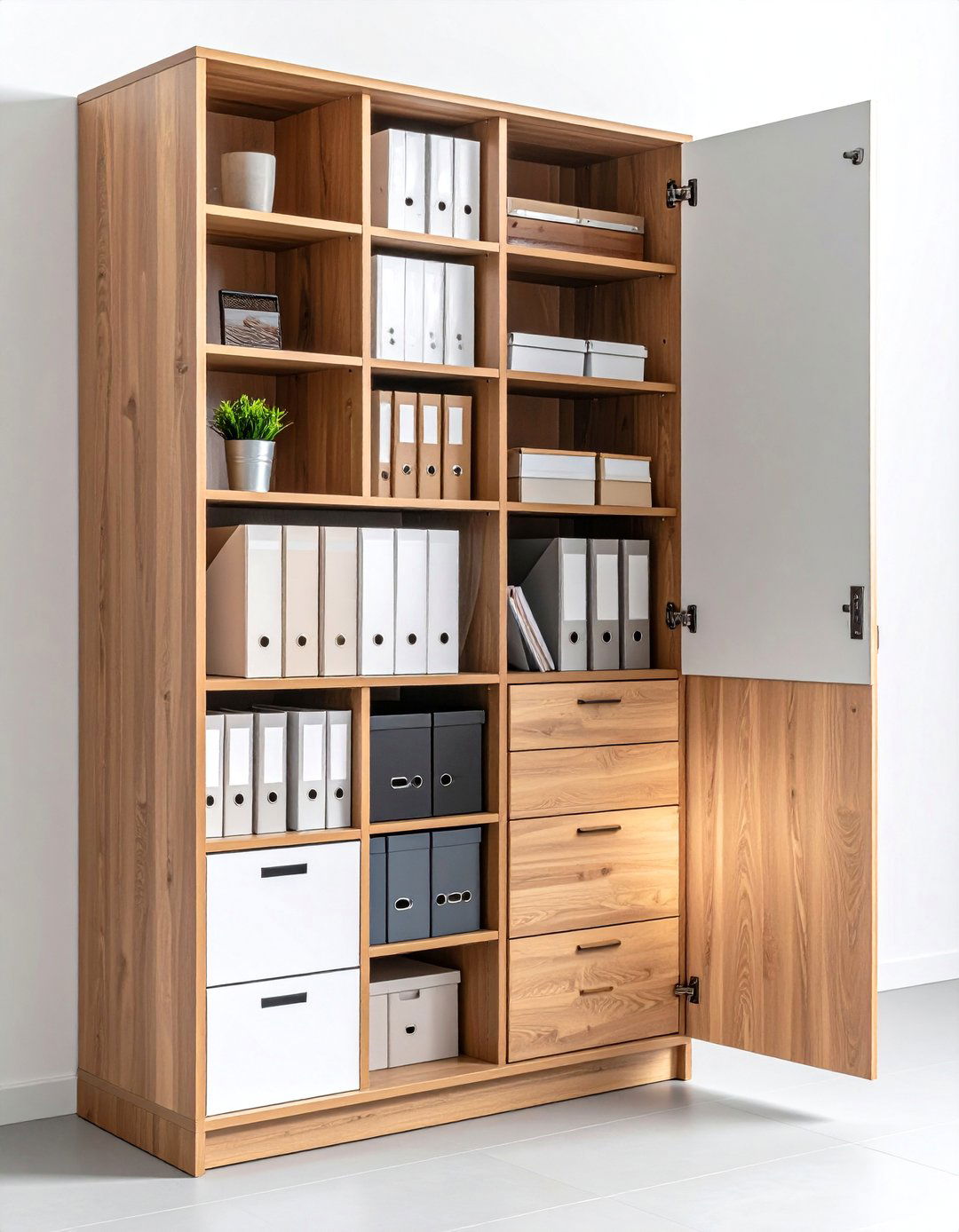
Transform a regular cabinet into a concealed command center that provides full organizational functionality while maintaining your home's clean, uncluttered aesthetic. Transform this space into a camouflaged command center that can easily be hidden away by installing a small rack to hang keys and individual hooks for hats and totes. Install organizational components inside the cabinet including file systems, small shelves, and magnetic strips on the door interior. Stack plastic bins or drawers inside the cabinet to store paperwork and school projects, label each one with sticker letters to designate a spot for each family member. Add adequate lighting inside the cabinet and ensure easy access to frequently used items. Attach magnetic strips to the inside of the door to hold memos and notes. This approach works exceptionally well for families who prioritize minimalist design or live in formal spaces where visible organizational systems would disrupt the aesthetic. A high shelf can be home to emergency supplies such as rechargeable flashlights or extra chargers. The hidden nature allows for extensive organizational capacity without compromising interior design goals.
15. Corner Command Center Nook
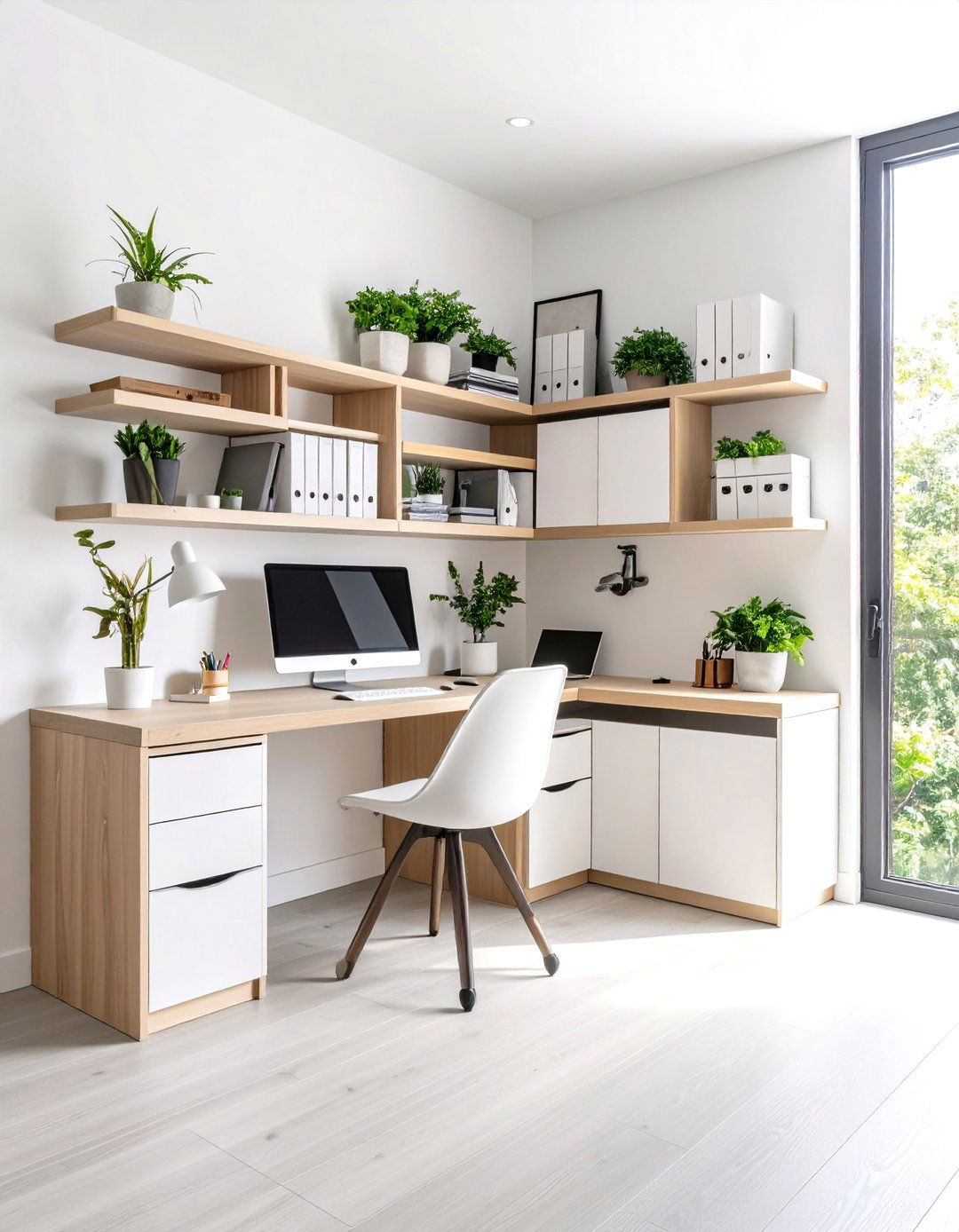
Maximize underutilized corner spaces by creating cozy command center nooks that transform awkward areas into highly functional organizational hubs. Small cabinet and floating shelves transform a corner of a dining room into a clever storage hub with clear countertops to provide space to pay bills and sort mail. Install corner shelving units that wrap around the angle, providing maximum storage capacity while fitting seamlessly into the space. Upgrade an unused corner of your house by turning it into a streamlined command center in a spot the whole family will see. Add a small desk surface if the corner allows, incorporate wall-mounted organizers above the shelving, and include adequate lighting to make the space functional throughout the day. It's helpful to have both a corkboard and a whiteboard plus a designated drop zone for all those notes that end up crumpled at the bottom of a backpack. This approach proves particularly effective in open floor plans where dedicated office space isn't available, creating defined organizational zones while maintaining the room's primary function and flow.
16. Farmhouse Style Command Center
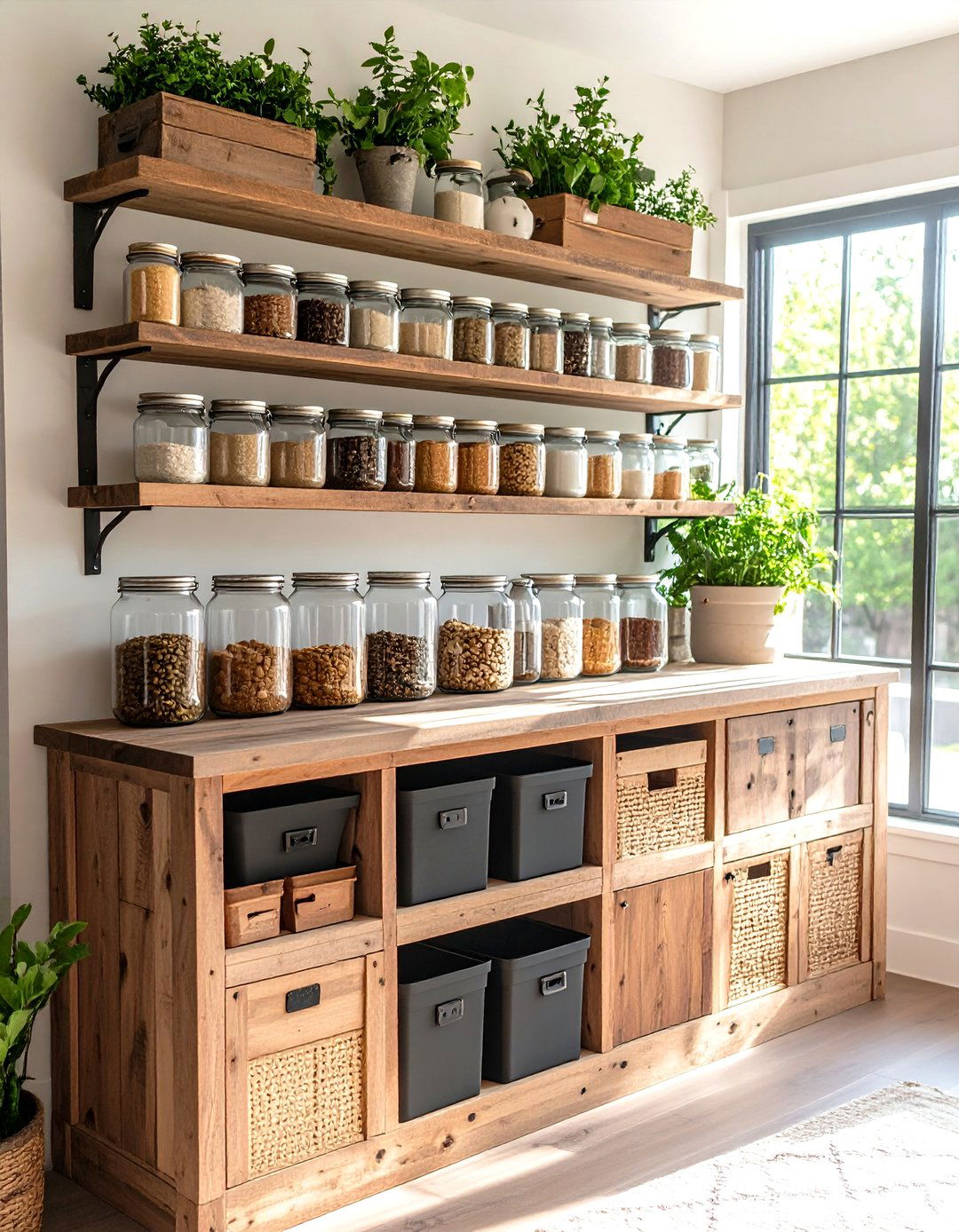
Create a command center that combines rustic charm with modern organizational efficiency using farmhouse-inspired design elements and natural materials. Farmhouse style is so popular; this entryway command center complete with a calendar, to-do lists, and drop zone for keys and bags checks all the organizational boxes. Incorporate reclaimed wood elements, vintage-style hardware, and neutral color palettes that complement farmhouse aesthetics. This organized station uses chalkboard-style bins, vintage clocks, and farmhouse accents for a station that looks just as beautiful as the rest of the space. Install chicken wire or burlap-backed frames for displaying papers, use mason jars for supply storage, and add galvanized metal containers for mail sorting. Include rustic hooks made from reclaimed materials and vintage-style labels for a cohesive appearance. The use of wood throughout the display and clipboards at the bottom are perfect for switching out daily, weekly, and monthly printables. This style approach ensures that your command center enhances rather than disrupts your home's design theme while providing all necessary organizational functions with authentic farmhouse character and warmth.
17. Gallery Wall Command Center Design

Integrate organizational functionality seamlessly into a gallery wall display, creating a command center that doubles as attractive home décor. You can make it like a giant gallery wall, but also include items that allow you to hold paper items in one place. Combine framed artwork, family photos, and decorative elements with functional organizational pieces like framed dry-erase boards, cork boards, and small shelving units. At a glance, this just looks like decor and is the best option if you don't love the look of traditional command centers. Arrange elements using gallery wall principles, maintaining consistent spacing and visual balance while ensuring organizational components remain easily accessible. Create your own wall family organizing system using printables and picture frames using dry erase markers to add to your lists and calendar, then wipe them off and start over. Include decorative containers that match your décor for storing supplies, and use stylish hooks that complement the overall design. This approach allows you to maintain your home's aesthetic integrity while incorporating essential organizational functions in a way that appears intentional and designed rather than purely utilitarian.
18. Pantry Command Center System

Utilize pantry space to create a command center that combines meal planning with family organization, taking advantage of this naturally food-focused location. The pantry is a space that most family members use daily, so why not give it the dual duty of storing your favorite snacks alongside your meal schedule. Install organizational systems on pantry walls or doors, including weekly menu calendars, grocery shopping lists, and meal prep schedules. By the doorframe, suspend a couple of weekly calendars to plan out the menu with notes such as ingredients you'll need to defrost ahead of time or scheduling conflicts. Add magnetic strips to metal shelving for holding notes and lists, incorporate baskets for storing meal planning supplies, and include a small clipboard for inventory tracking. If you are lucky enough to have a giant walk in pantry, it's the perfect spot for a command center. This location proves particularly effective for meal planning since it's directly adjacent to food storage, making it easy to coordinate menus with available ingredients while keeping family schedules coordinated with meal times and preparation requirements.
19. Multi-Calendar Command Center

Design a comprehensive scheduling system using multiple calendars to manage complex family schedules with different time horizons and activity types. If your kids are involved in many sports and school activities with schedules stretching into next season, consider incorporating two calendars into your command center—one for the current month and one for the month ahead. Install large wall calendars that provide space for detailed scheduling, using different colored pens or markers for each family member's activities. On the same wall, give each child their own hanging file pocket and make it magnetic to avoid losing smaller memos and mementos. Include a yearly overview calendar for long-term planning, monthly calendars for detailed scheduling, and weekly planners for day-to-day management. Get the whole family involved with scheduling with a larger-than-life dry-erase calendar where everyone can add their events or reminders using assigned colors per family member. This multi-layered approach ensures that both immediate needs and future planning receive adequate attention while preventing scheduling conflicts and forgotten commitments through comprehensive visual management.
20. Minimalist Command Center Approach
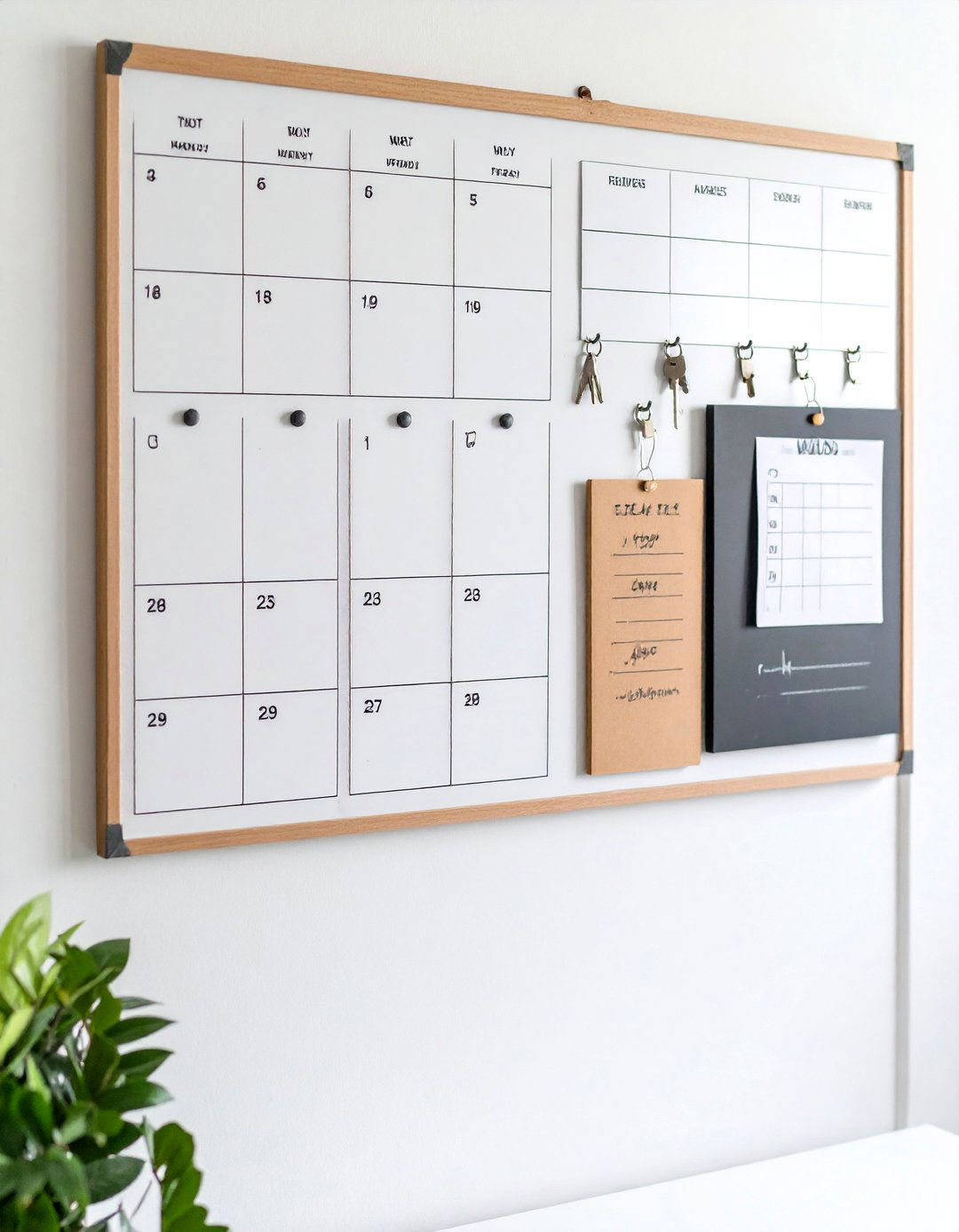
Create an efficient organizational system using clean lines, limited components, and strategic placement that delivers maximum functionality with minimal visual impact. There are a lot of ways to make a DIY command center, from magnetic strips to fabric-covered bulletin boards, or just go plain Jane for a minimalist approach. Select only essential organizational elements that serve multiple purposes, focusing on quality over quantity in both materials and design. It doesn't get much more streamlined than a mounted whiteboard calendar and a to-do list on a chalkboard with hooks for keeping keys, bags, and leashes organized. Use neutral colors, simple geometric shapes, and unadorned surfaces to maintain visual calm while ensuring functionality remains uncompromised. Keep a bulletin board over a small desk for photos and other fun things, yet keep it clean and still have a bit of personality. Include only the most frequently used organizational tools, avoiding decorative elements that don't serve practical purposes. This approach works exceptionally well for small spaces, modern design preferences, or families who find visual simplicity reduces stress and increases focus on essential organizational tasks rather than aesthetic maintenance.
Conclusion:
Command centers transform household chaos into organized efficiency by providing centralized locations for managing family schedules, important documents, and daily essentials. Whether you choose a elaborate wall-mounted system or a simple countertop arrangement, the key lies in selecting solutions that match your family's specific needs and lifestyle patterns. Successful command centers combine practical storage, clear labeling systems, and accessible placement to ensure consistent family participation. By implementing one of these twenty approaches, you'll create an organizational hub that reduces daily stress, prevents forgotten appointments, and keeps your household running smoothly while reflecting your personal style and space constraints.


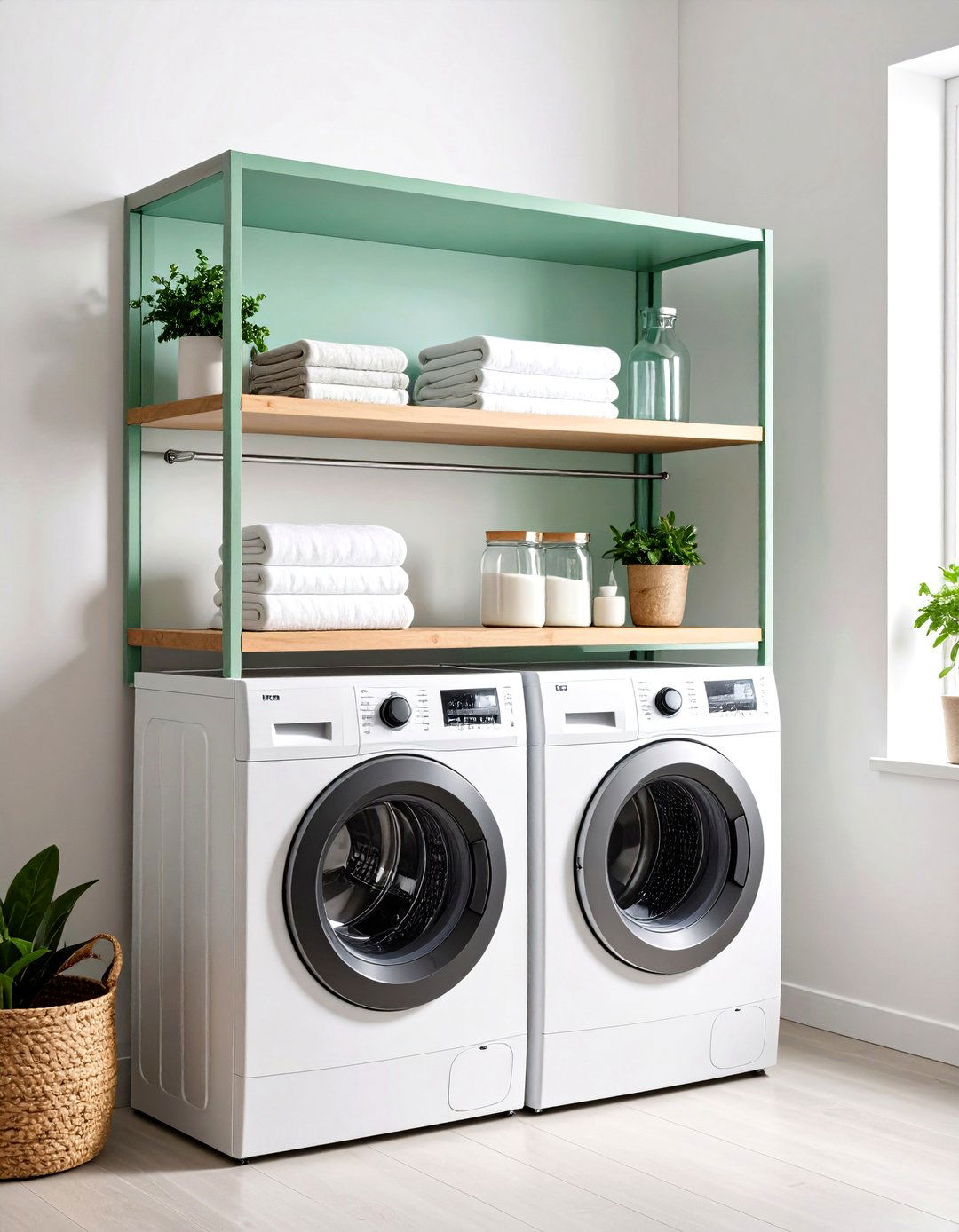
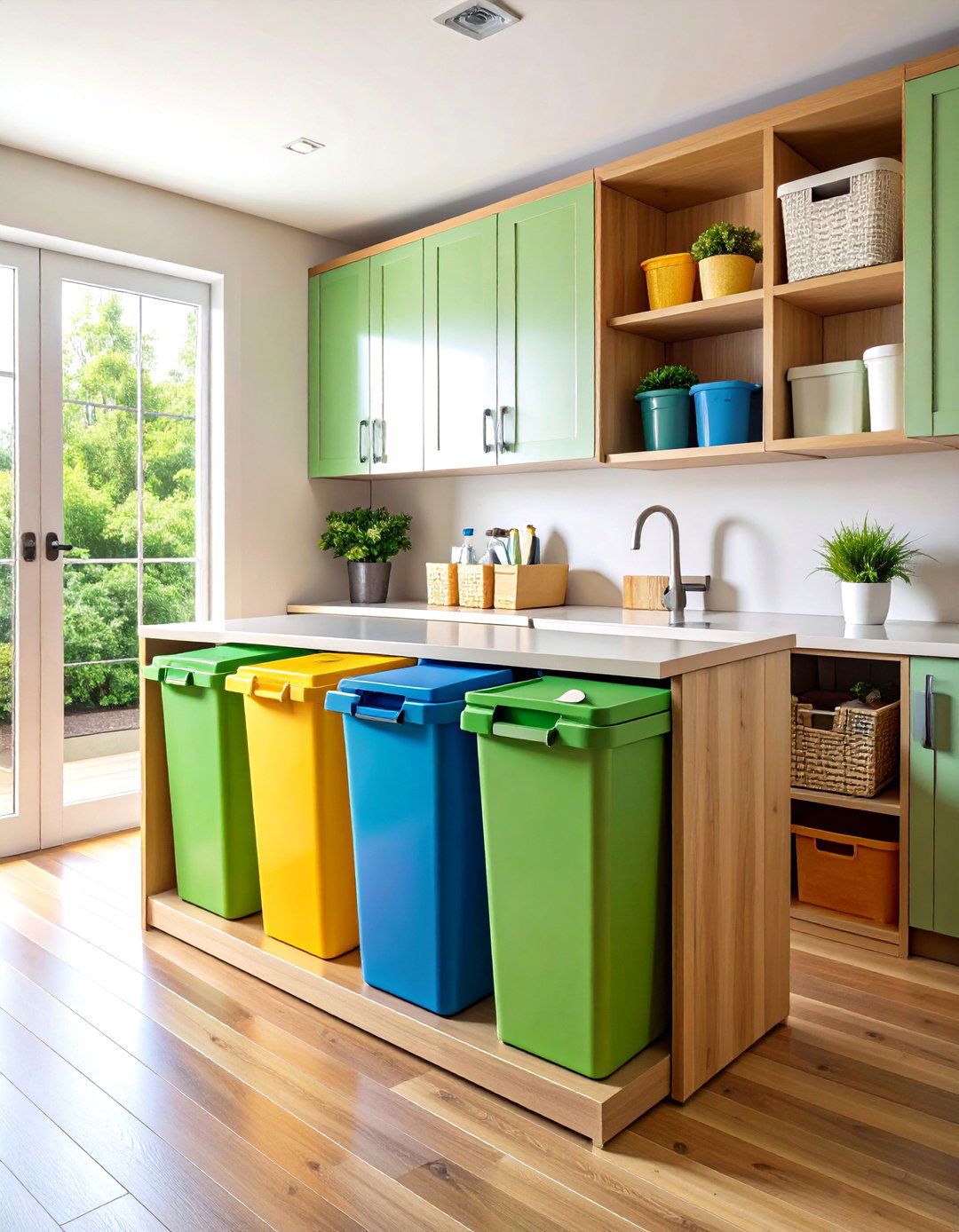
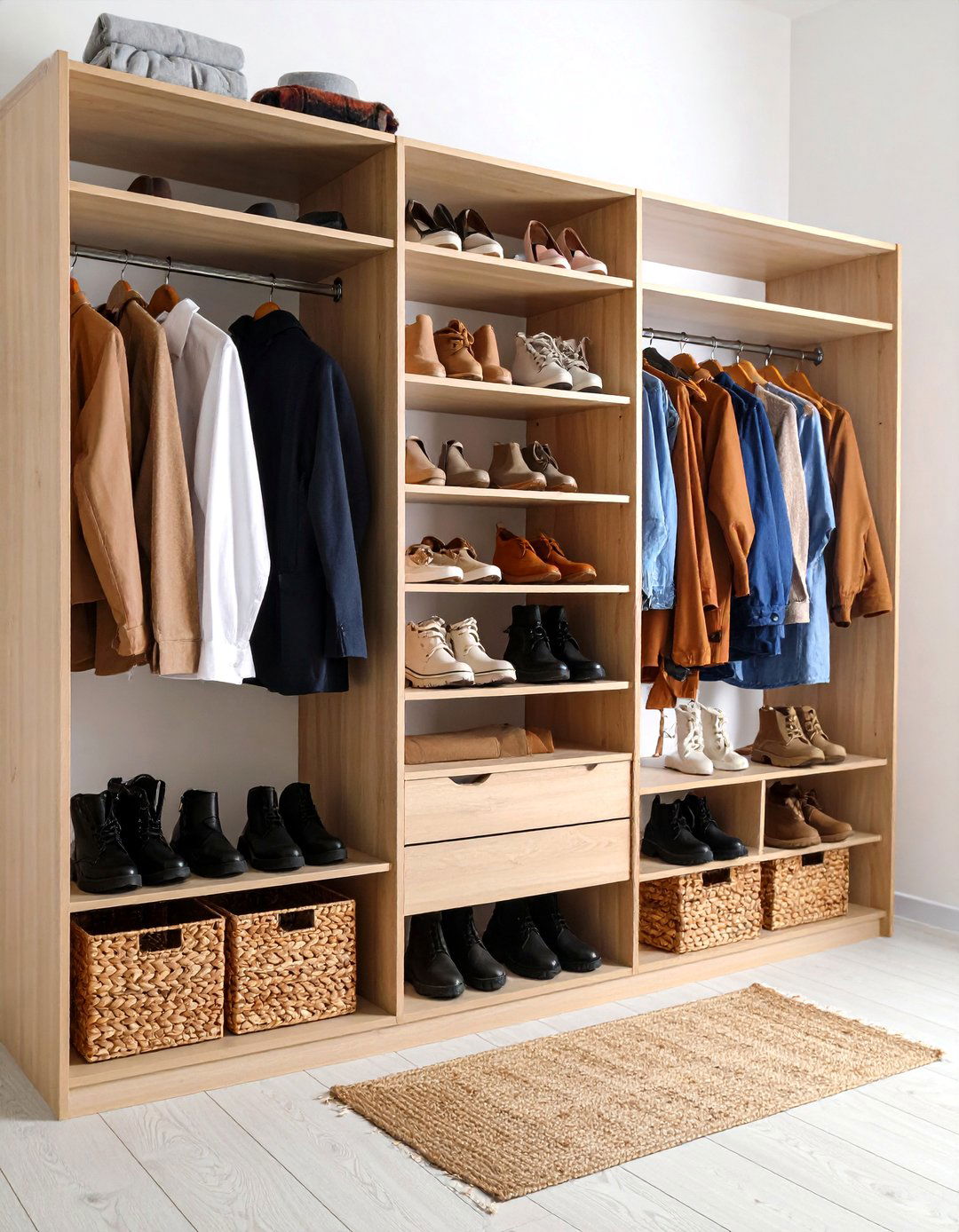
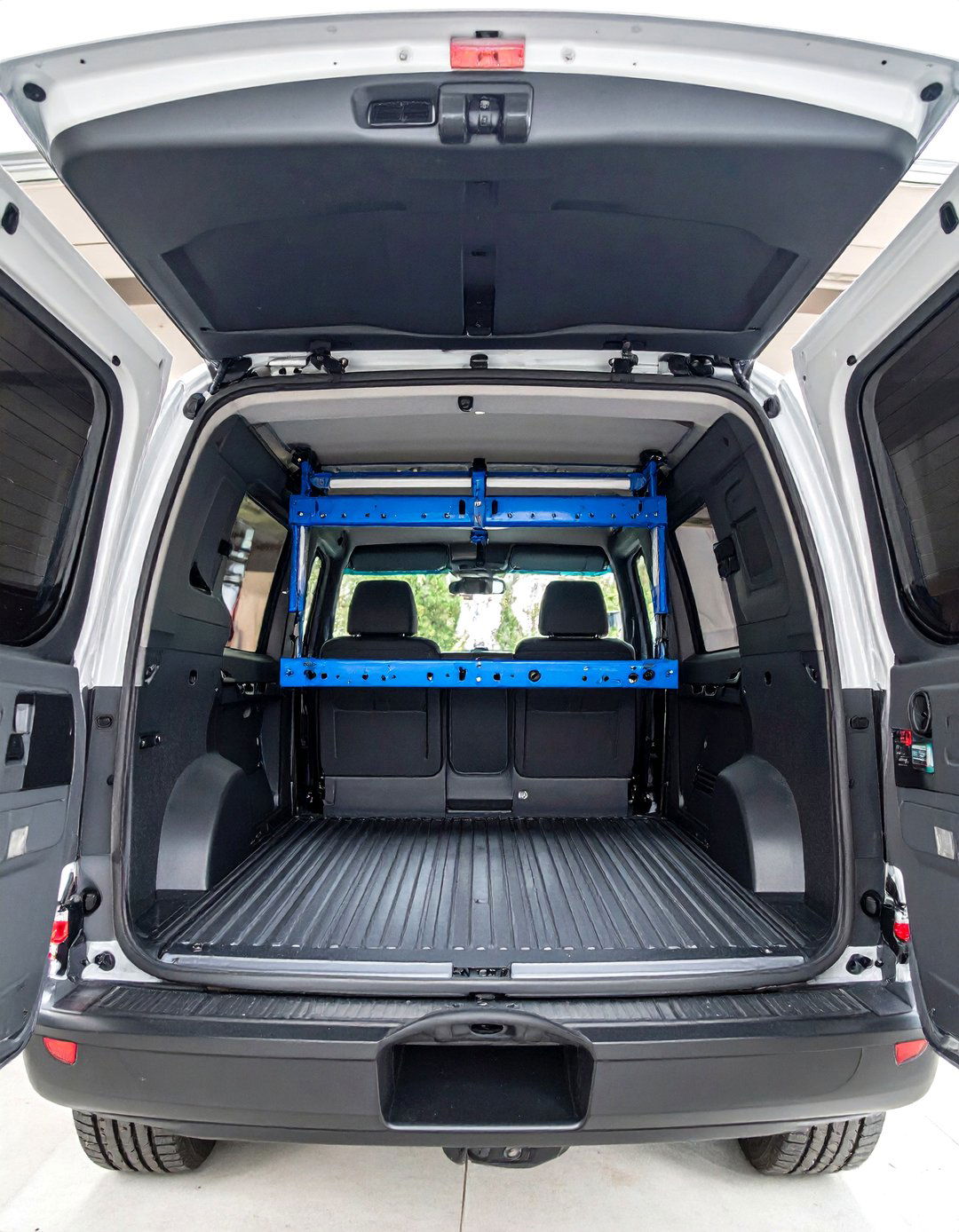
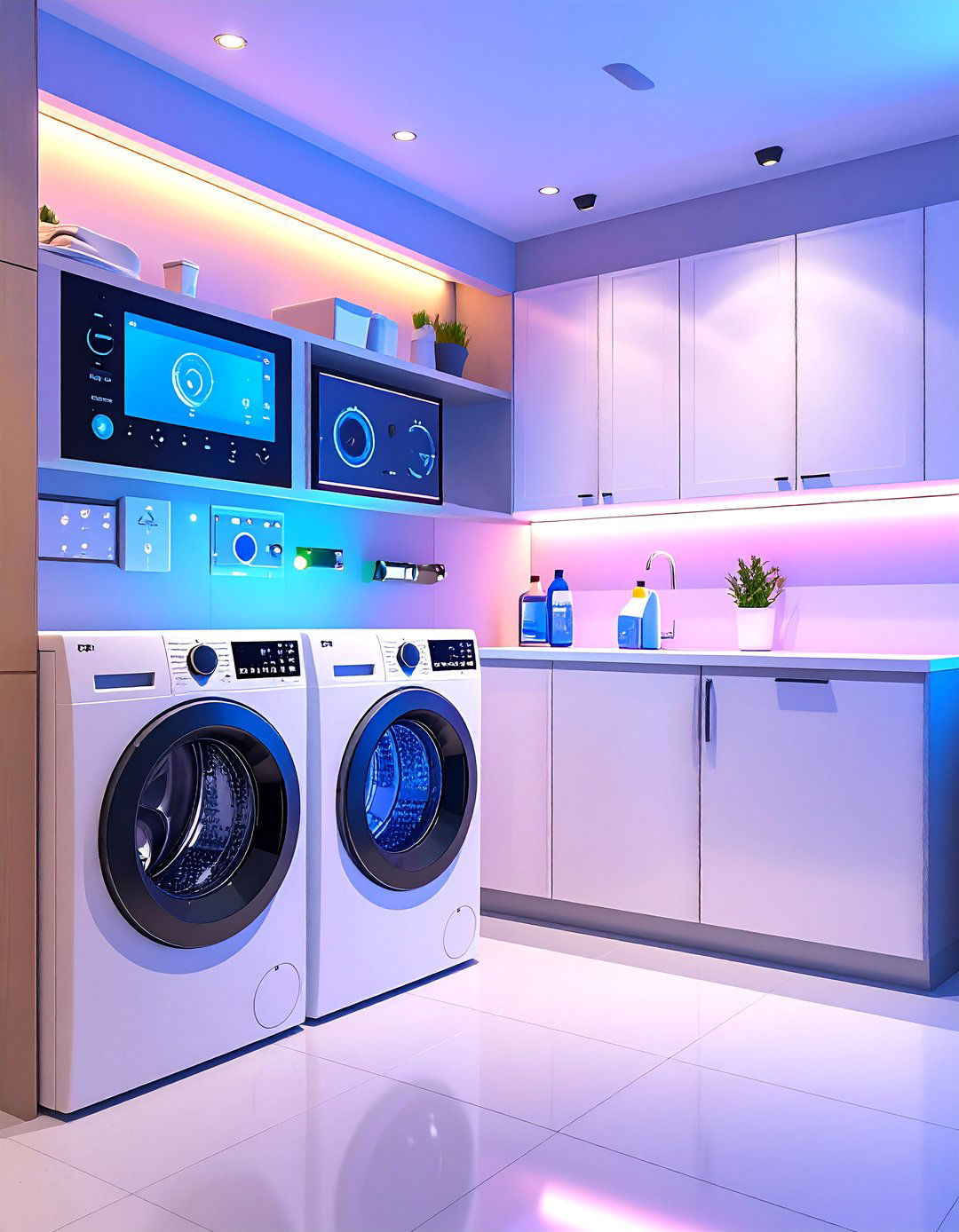

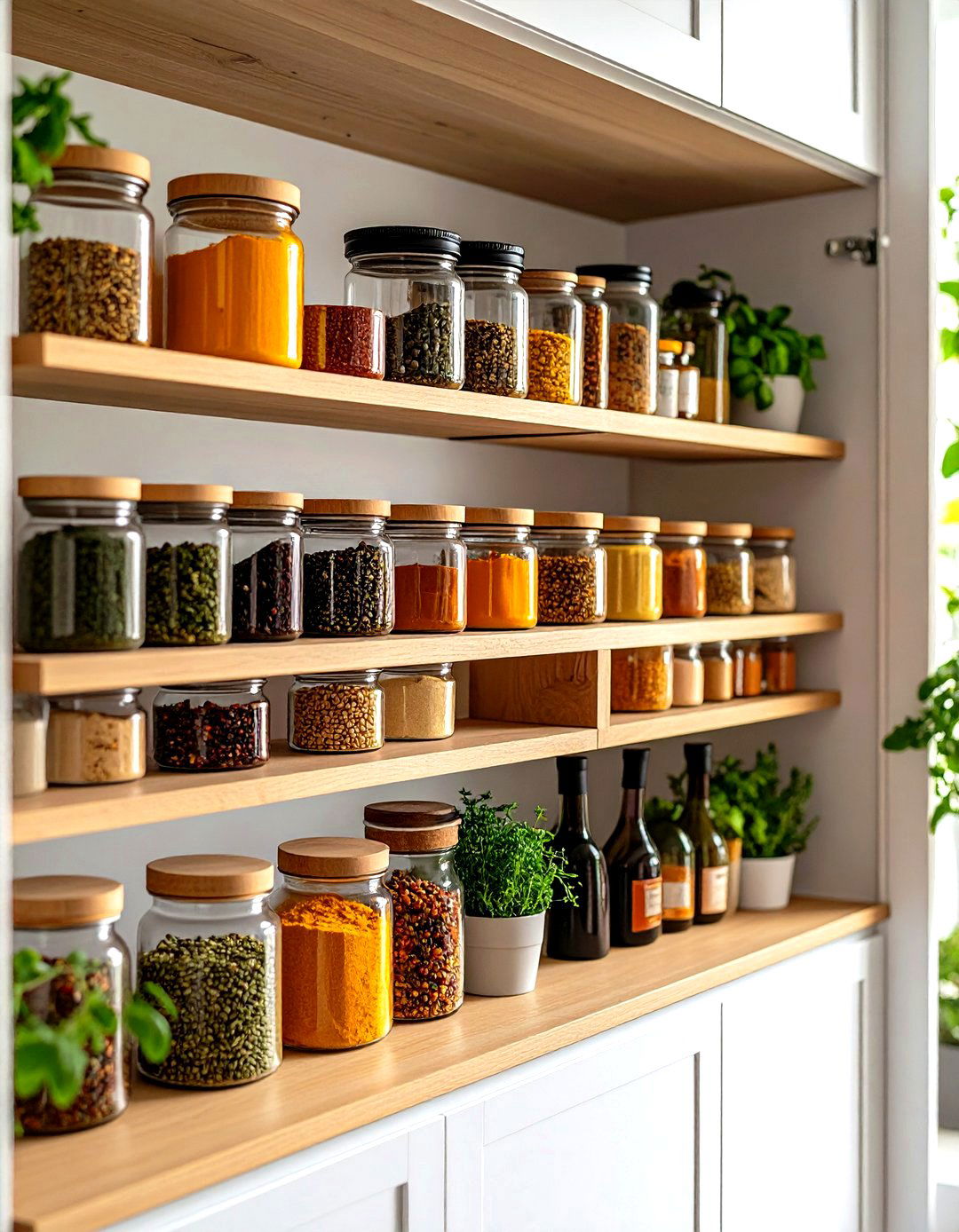
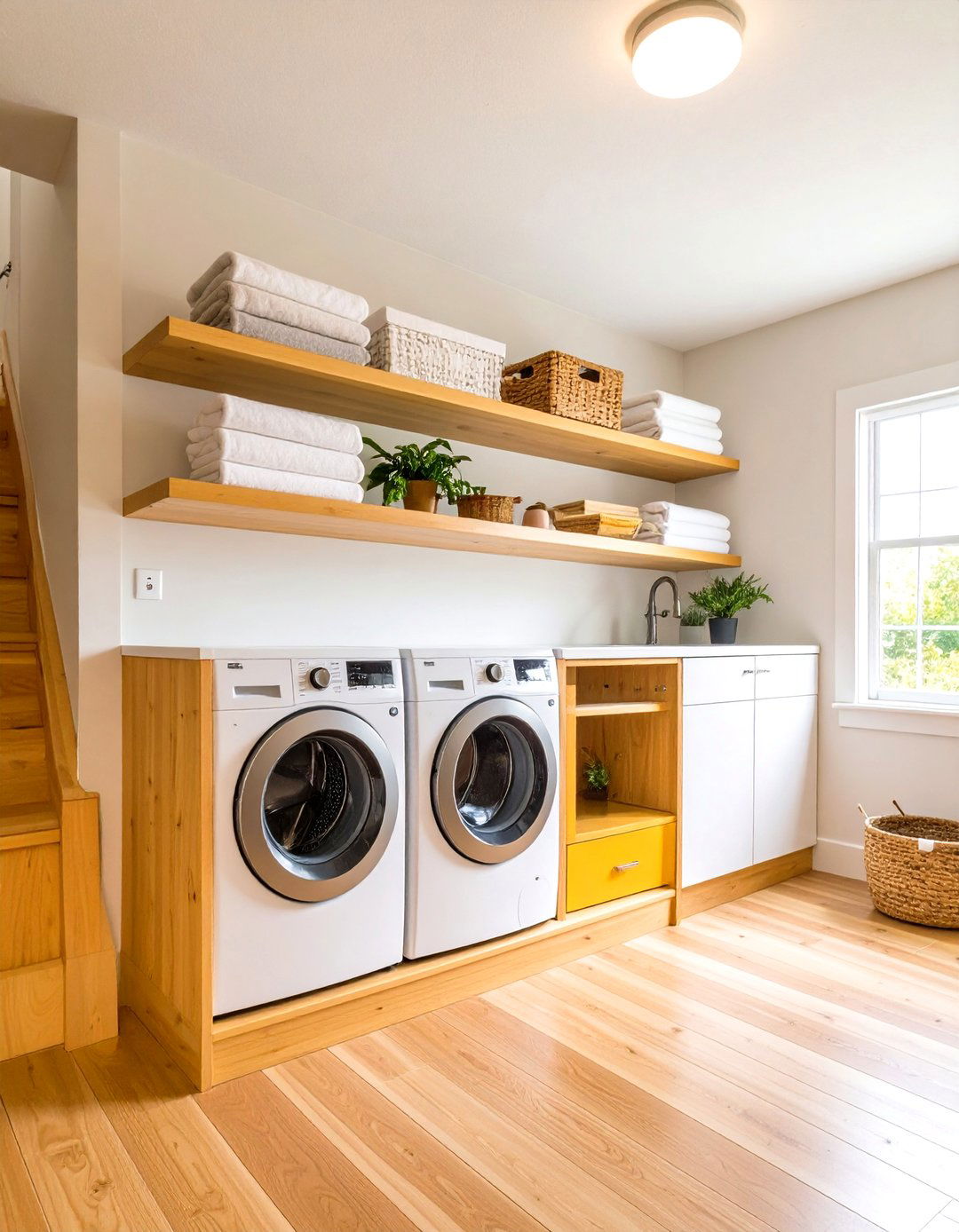
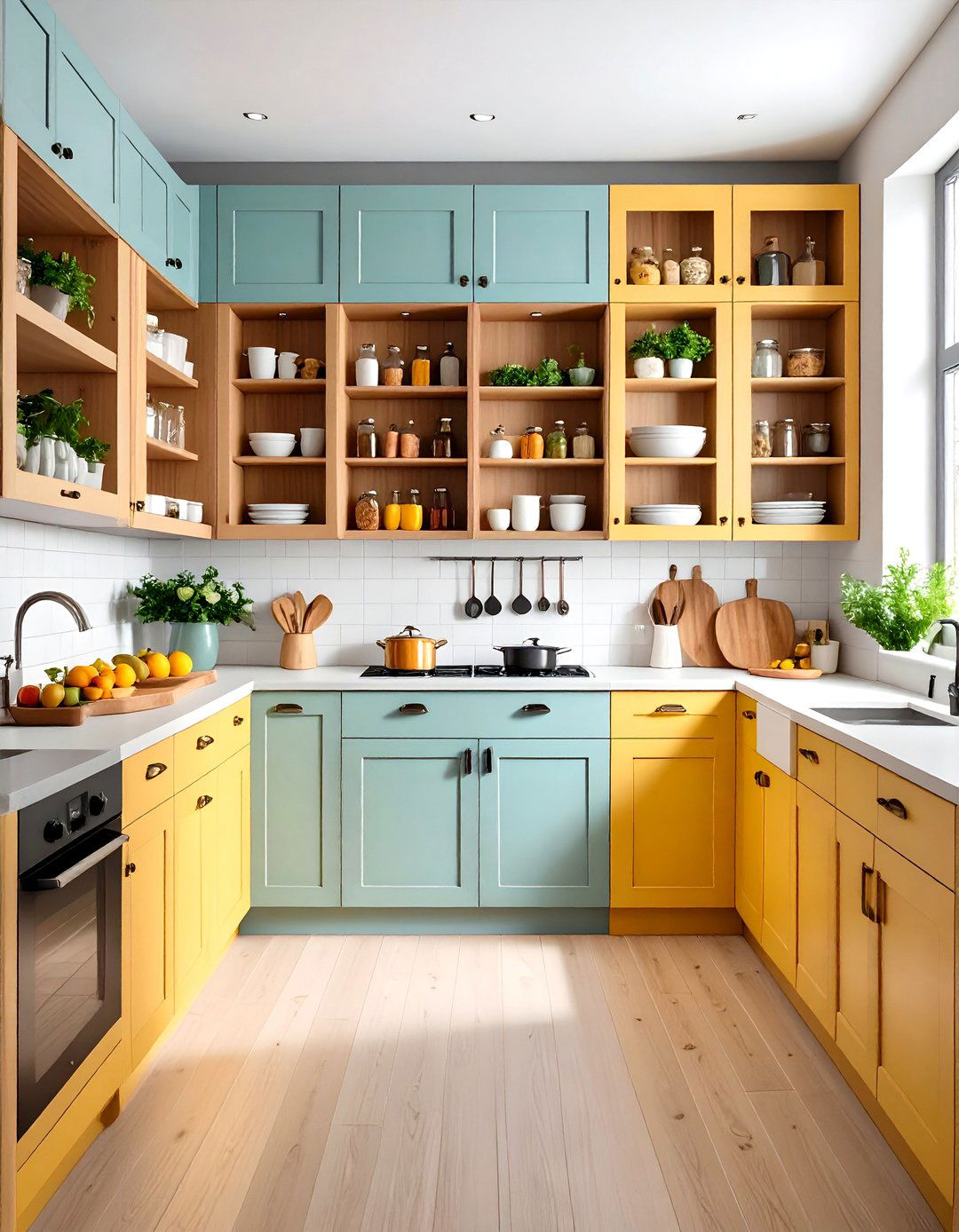
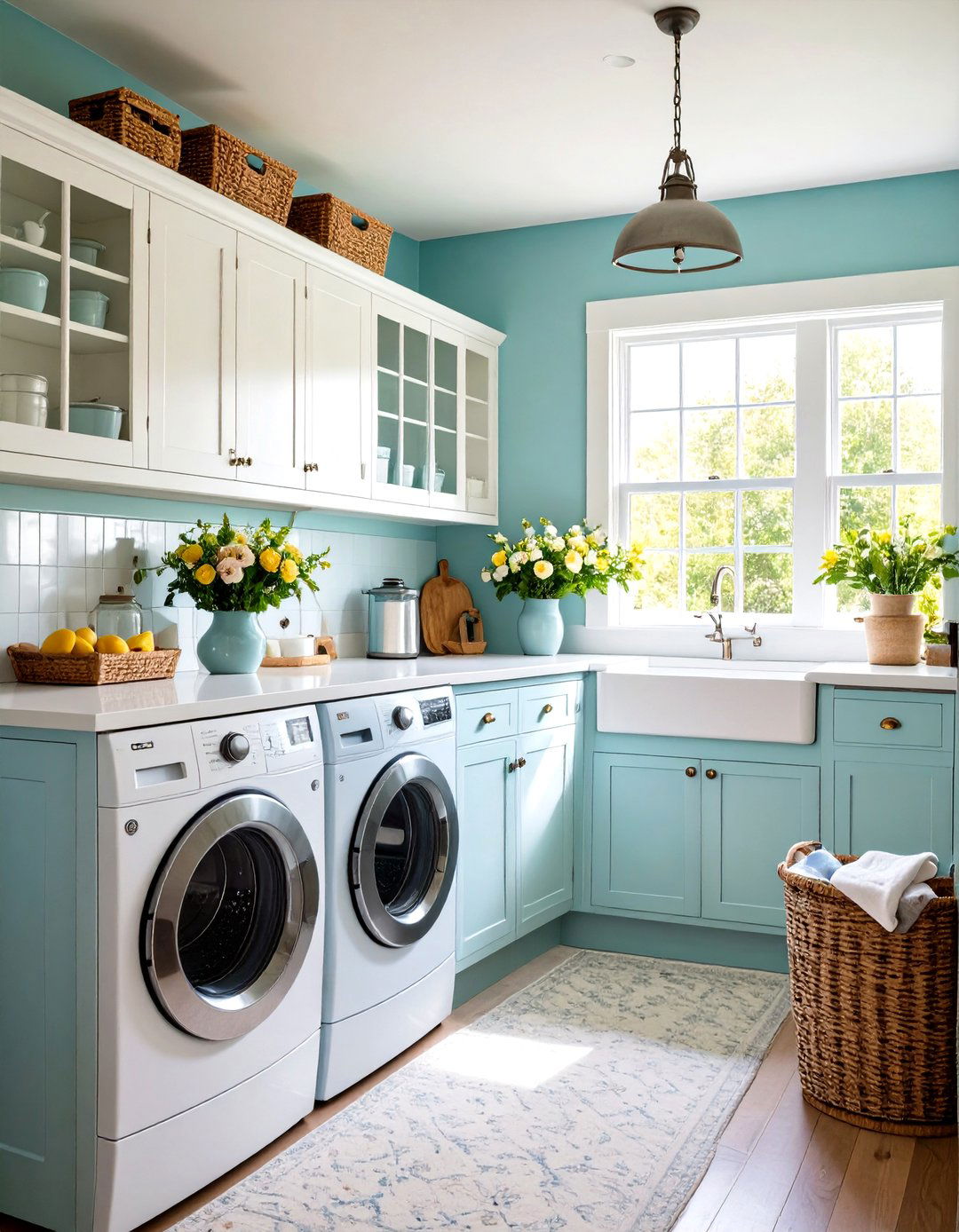

Leave a Reply